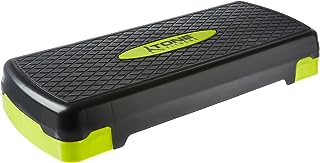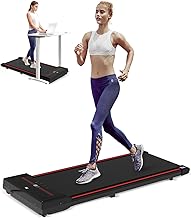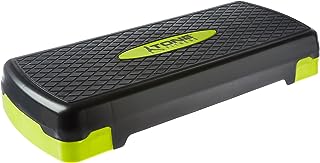5 important factors worth considering when looking for the best yoga mat
When starting yoga, picking the right mat can really help you improve. It’s not just about finding one that looks good – there are important things to think about that can make your yoga better. Things like how thick the mat is, what material it’s made of, how well it grips the floor, and if it helps you stay aligned all play a role in making your practice more comfortable and stable. When you’re looking at all the different mats out there, remember to consider these key factors to make sure your yoga journey is the best it can be.
See our guide to the best yoga mat.
Durability
When you’re thinking about buying a yoga mat, it’s important to look for one that’s durable. A durable yoga mat will last a long time and be stable and reliable during your yoga practice. Choosing a mat made from high-quality materials like natural rubber or PVC can help it withstand wear and tear. While a durable yoga mat may cost more up front, it will save you money in the long run.
Nobody wants a yoga mat that starts falling apart during a practice, so it’s essential to prioritize durability when picking one out. A durable yoga mat not only improves your performance but also shows a commitment to sustainability. By using a mat that can handle regular use over time, you can help reduce waste from constantly replacing mats. Choosing a durable yoga mat fits with the spirit of yoga, promoting mindfulness and responsible consumption.
In a world where throwaway items are common, opting for a durable yoga mat is a deliberate choice for sustainability and longevity. Prioritizing durability when buying a yoga mat doesn’t just benefit your practice – it also supports mindfulness and eco-friendly values. It’s a decision that goes beyond just having a mat; it reflects a deeper commitment to your practice and the environment.
Thickness
When choosing a yoga mat, thickness is an important factor to consider. The thickness of your mat can impact your practice by providing comfort and stability during poses. Thicker mats, around 6mm or more, can cushion joints and create a more comfortable surface for exercises, which is beneficial for those with joint pain or needing extra support.
However, a thicker mat may not provide as stable of a foundation for balancing poses. For those focusing on building strength and proper alignment, a thinner mat, around 3mm, may be better as it allows for better grip and connection with the ground. The best thickness for your yoga mat depends on your preferences and needs, balancing comfort and stability to enhance your overall yoga experience.
Material
When choosing a yoga mat, the material is important but often overlooked. The material of your mat can make a big difference in your practice – it can give you comfort and support, or it can be uncomfortable and slippery. Opting for high-quality, eco-friendly materials like natural rubber or PVC-free options not only helps the environment but also gives you a stable base for your poses. These materials are grippy and durable, which is essential for staying steady during challenging poses. Investing in a yoga mat made from good materials not only helps your practice but also shows that you care about being mindful and respecting the environment.
The material of your yoga mat can also affect how you take care of it and how long it lasts. Choosing a material that is easy to clean and can withstand wear and tear can save you time and money in the long run. Synthetic materials like TPE and PVC are known for being durable and easy to maintain, making them good choices for yogis who are on the move. However, it’s important to find a balance between durability and being eco-friendly by choosing materials that are long-lasting and sustainable. By focusing on the material of your yoga mat, you can improve your practice and contribute to a more mindful and eco-friendly yoga community.
Grip
When buying a yoga mat, it’s important to think about how good its grip is. The grip of a yoga mat can make a big difference in your practice. It can make you feel more stable, comfortable, and overall make your experience better. A mat with good grip lets you focus on your poses without sliding around or losing your balance. It helps you feel connected to the ground and gives you a solid base to practice on. Getting a yoga mat with great grip not only improves your performance but also reduces the risk of getting hurt when doing harder poses.
The texture and material of the yoga mat are important in how good its grip is. Choose a mat with a surface that doesn’t slip, even when you’re sweating or practicing in warm conditions. Look for mats made specifically for good grip, especially if you do intense yoga or like trying challenging poses. While thickness and cushioning are important, having good grip is key to improving your practice and being able to try new things with confidence. In the end, picking a yoga mat with excellent grip is an investment in your practice. It makes sure you can focus on your mindfulness and movement without worrying about slipping or stability.
Price
When buying a yoga mat, price is important to consider. It might be tempting to choose the cheapest option, but investing in a high-quality mat can improve your practice. A good mat offers better support, cushioning, and durability. It’s worth spending more on a mat that will last through many sessions and benefit your well-being and comfort.
While sticking to a budget is essential, sacrificing quality for a lower price can lead to discomfort during yoga practice. Finding a balance between affordability and quality is key. A good mat can improve your stability in balancing poses and keep you comfortable during long practice sessions. So, think of the price of a yoga mat as an investment in your practice and well-being, focusing on quality and longevity rather than saving money in the short term.
Conclusion
In simple terms, the yoga mat is not just a tool, but a base for self-exploration. It represents a dedication to taking care of the mind, body, and spirit during each practice, creating a special area where the balance of moving and being still comes together. By setting our intentions on the mat and breathing life into each pose, we connect our physical and spiritual selves, leading to a stronger bond with the current moment. Therefore, when you buy a mat, you are investing in more than just a piece of equipment – you are investing in a gateway to inner peace and overall well-being that goes beyond its surface. Want more info on listening devices, check the best listening devices.


